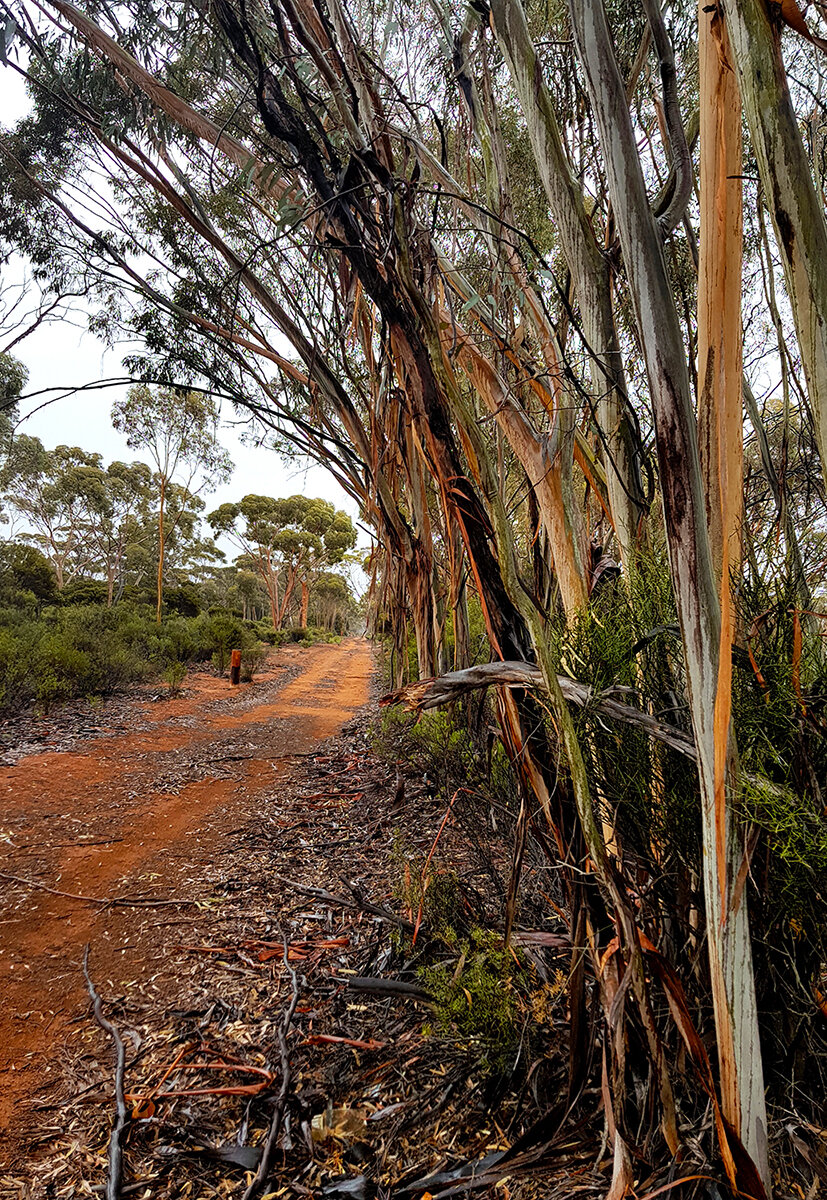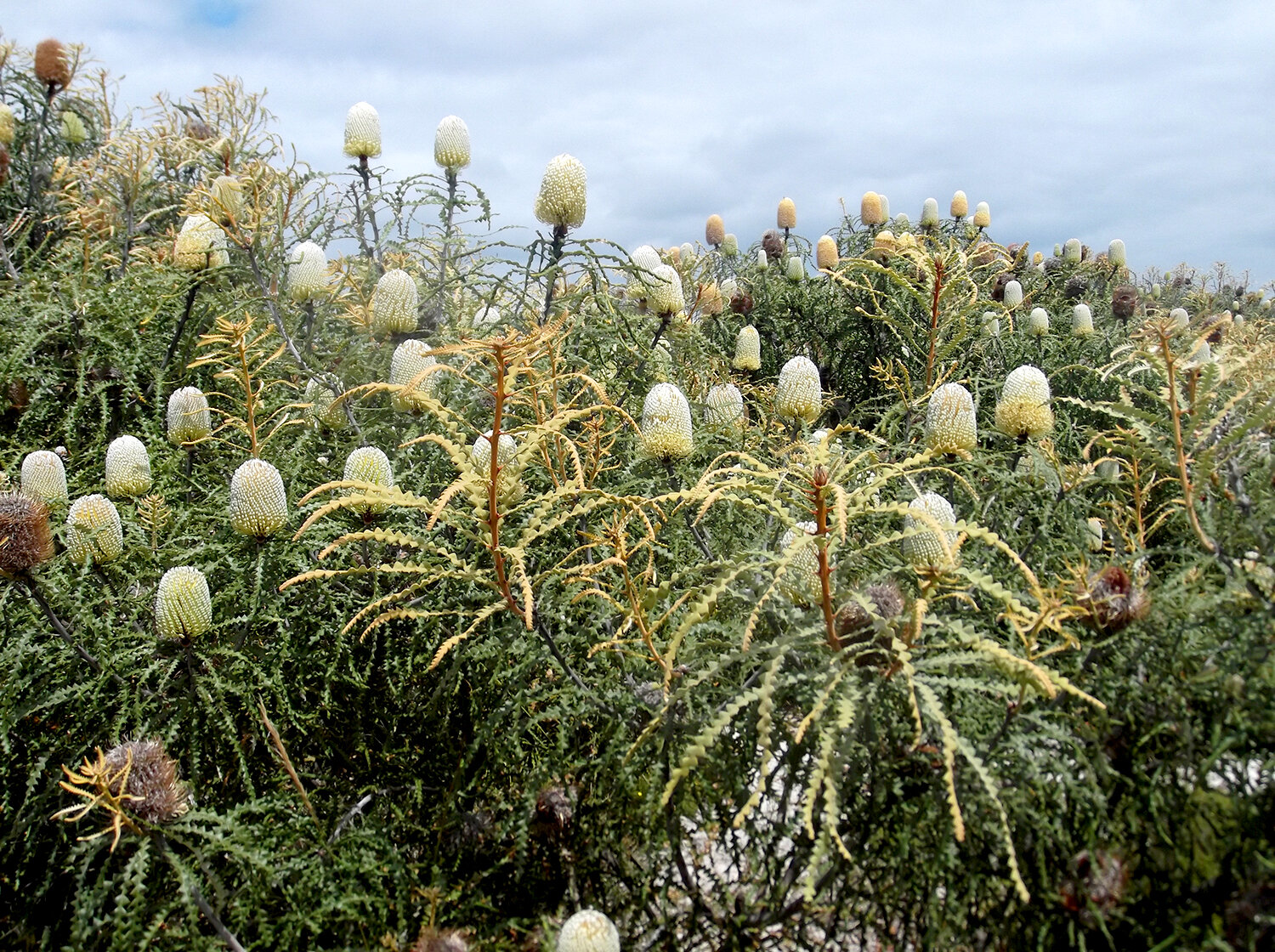The Canary in the Coal Mine
Bees are, without a doubt, one of the most important species in the animal kingdom. It’s not just that they provide us with honey and pollination services; they have recently been found by researchers at UWA to be crucial for achieving 16 of the UN’s 17 sustainable development goals. Yet the resources that beekeepers depend upon are under threat here in Western Australia, with significant ramifications for the industry and, more broadly, for biodiversity and ecosystems.
Prescribed burns in coastal regions place fragile ecosystems in a precarious position.
There are three main resource issues for beekeepers in southern WA, with differing levels of significance in different parts of the state. For example, in the northern beekeeping region, north of Perth, loss of rainfall due to changing climate is impacting the landscape dramatically. On a recent trip to the Northern Beekeepers Reserve, it was not the wildflowers that stood out but rather, the lack of them. The area has experienced a decrease in rainfall, which affects the ability of important nectar-producing plant species to grow and reproduce. The effects of this were evident in the amount of dry and dead vegetation. On top of this, prescribed burns at relatively short intervals over relatively large areas of land are creating further resource insecurity, particularly as some of the burns are taking place at intervals so short that the native flora doesn’t have time to regrow, recover and ultimately, reproduce.
An aerial image of old growth Banksia speciosa and Nuytsia floribunda affected by a prescribed burn after it crossed the area perimeter at Margaret Cove, Stokes Inlet National Park WA.
In the southern jarrah and karri forests, ongoing logging also presents a major problem for beekeepers. The Forest Products Commission (FPC), a state-owned body responsible for logging in the area’s forests, has been logging forest that contains old trees – some over 500 years old. For the most part, this has been for low value uses such as paper pulp, charcoal or firewood. Yet, and perhaps unsurprisingly, FPC’s native forestry sector, according to a report published by the Australia Institute in 2016, operated at a loss of $34 million over the four years to 2016 and has cost the state government (i.e. the WA taxpayer) a cool $100 million since inception in 2000. On top of this, climate change and fuel reduction burns once again compound the issue. Beekeepers are finding it difficult to plan and obtain high-value resources like jarrah honey, currently worth upwards of $40kg retail due to its high biological activity and proven health benefits.
Esperance Honey apiary on location at a Jarrah site in Dwellingup, in late Spring 2017. This particular forest and Jarrah region is under pressure from logging.
This roadside beauty and highly valued beekeeping country North of Norseman, WA is a mixture of Goldfields blackbutt and Merit. Now burnt (2019-20 bushfires).
Estimated 40 years recovery period for woodland species.
Here in the Goldfields-Esperance region, the major resource issue comes from over-frequent fuel reduction burns at a scale and of an intensity that are likely to have an adverse impact on ecosystem functioning long-term. In his book, The Greatest Estate on Earth, historian Bill Gammage highlights how cultural burns undertaken by indigenous Australians were designed to create a mosaic of ‘templates’ across the landscape for different ecosystems, optimising environmental health and biodiversity. Though burning was undertaken regularly, the approach was complex and reflexive, based on a deep understanding of the landscape, including the needs of endemic flora and fauna, and timed in accordance with rainfall. Our current, modern approach to burning – primarily for fuel reduction, with biodiversity and ecosystem functioning secondary considerations – has been criticised as too simplistic and prescriptive, and at intervals much shorter than pre-European settlement. As a result, negative impacts on biodiversity (both flora and fauna), water and nutrient cycling and a negligible or increased risk of subsequent wildfire, have been noted in the scientific literature. According to one study, fuel reduction burns , as they are currently undertaken, offer a “poor return on investment”. Coupled with increased pressure from rainfall loss and hotter weather, our bush is in an increasingly bad way and we’re losing native vegetation at a rapid rate.
These resource issues are indicative of a wider issue – the increased pressure that all of our ecological systems are under. Bees act as the canary in the coal mine; when they are struggling to obtain enough resources or their health is suffering, the entire ecosystem that they are part of will be similarly struggling. The challenges that our industry face in terms of resource security are not only pertinent to beekeepers, but to all of us, given how reliant our society is on healthy, functioning ecosystems.
Pure stands of Banksia speciosa, prior to prescribed burning.
Margaret Cove, Stokes Inlet National Park, WA.
Banksia speciosa, 12 months after prescribed burning.
Estimated 15-20 year recovery period to full honey production.
Margaret Cove, Stokes Inlet National Park, WA.





